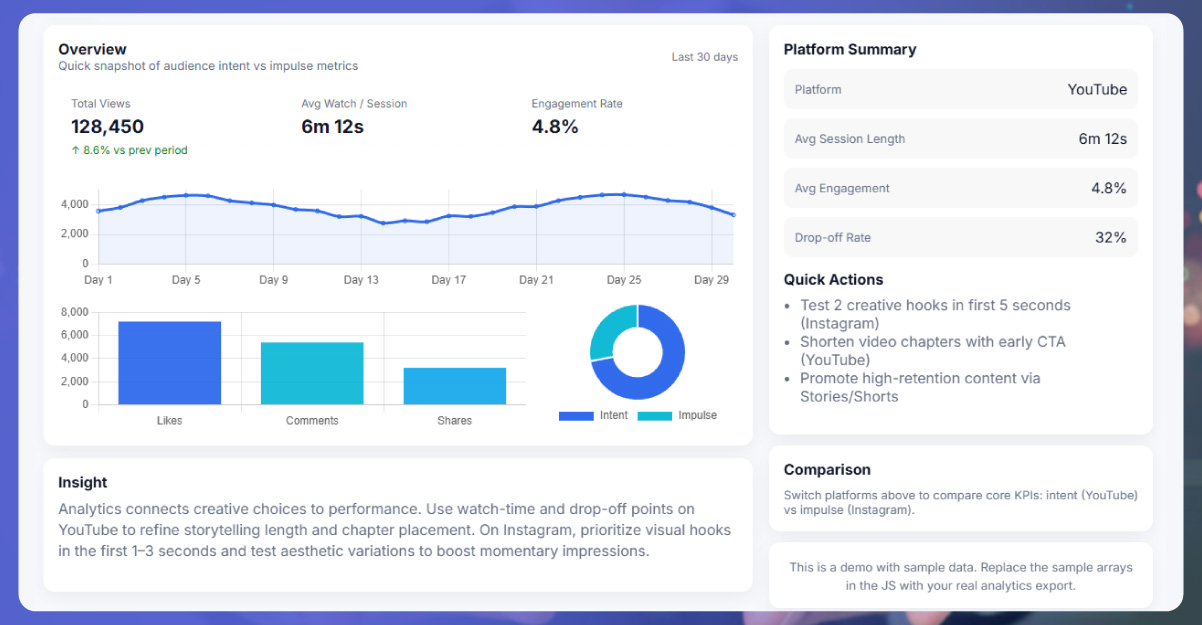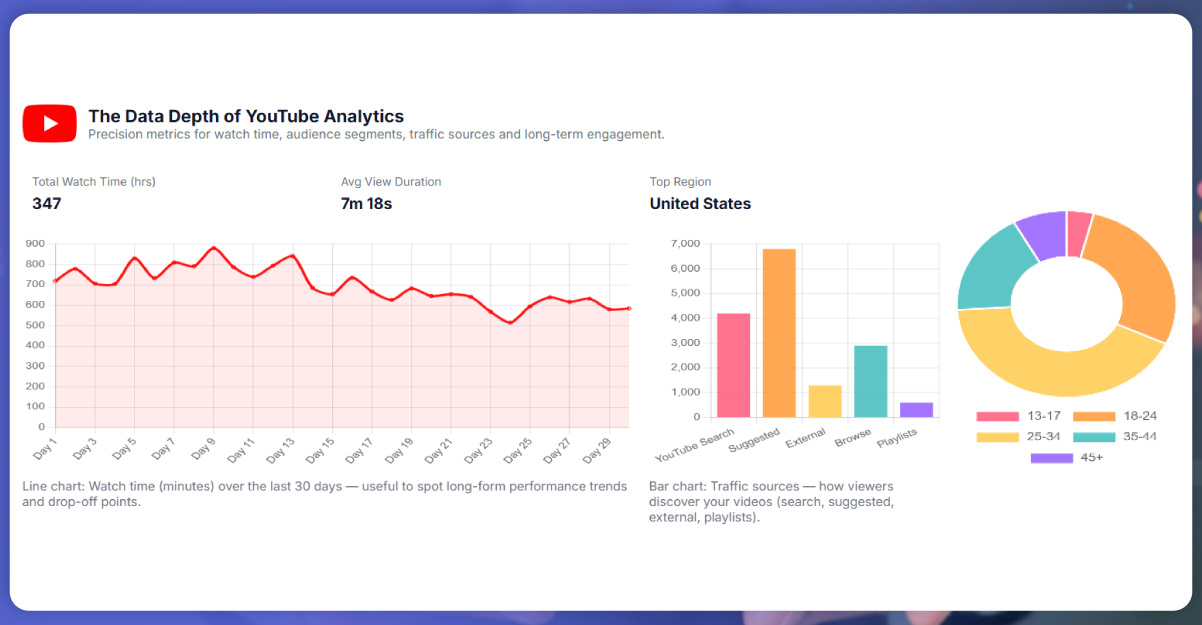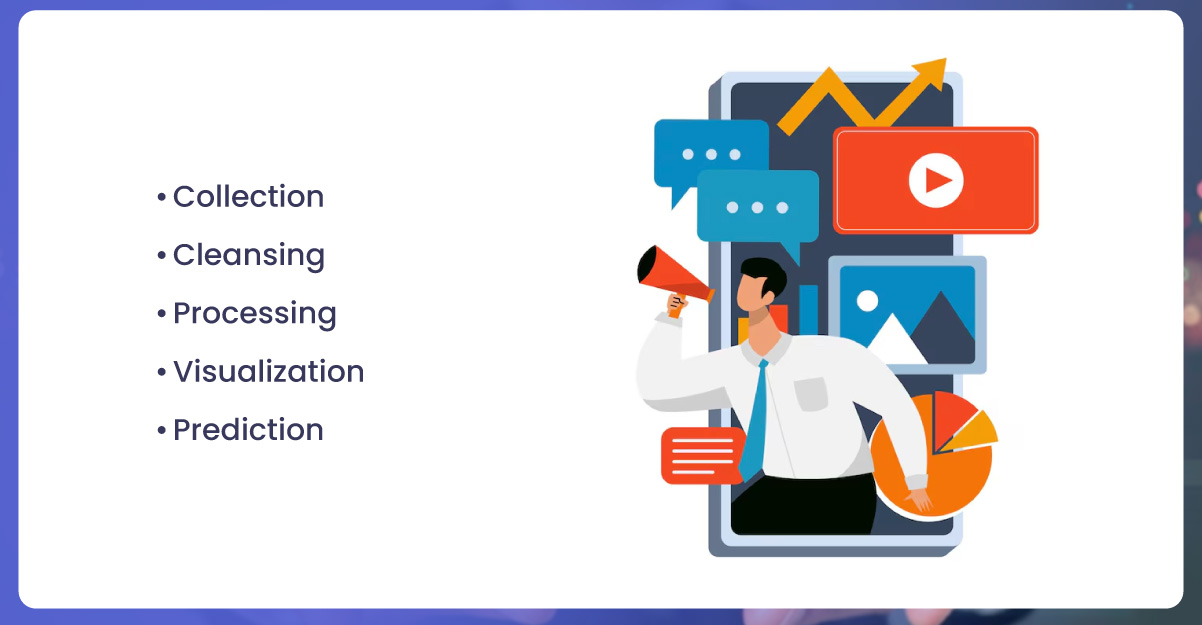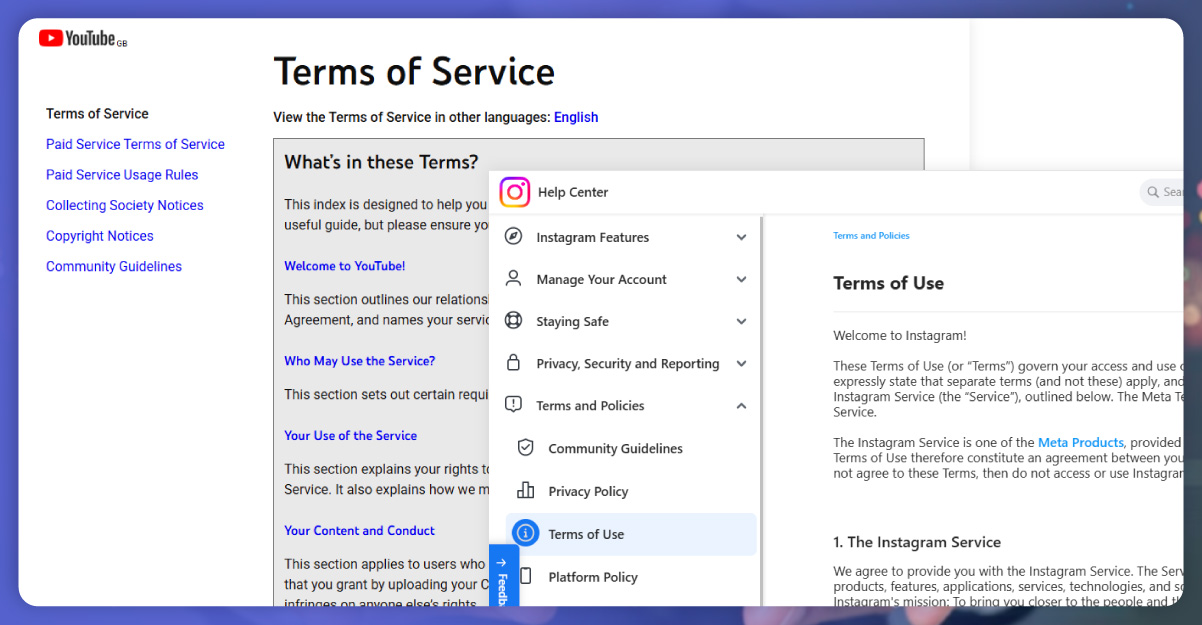
In the fast-paced era of digital storytelling, brands are constantly challenged to understand how, when, and where audiences engage with their content. As social platforms evolve, analytics has become the foundation for shaping creative and commercial success. YouTube vs Instagram data analytics for brands offers an invaluable perspective for marketers trying to decode which platform delivers more meaningful engagement, stronger reach, and better return on investment.
To generate such insights, businesses increasingly rely on automation tools to Scrape YouTube vs Instagram marketing data, allowing them to collect engagement patterns, track ad responses, and evaluate influencer performance in real time.
The growing power of creator-driven campaigns has also expanded the analytical horizon, pushing brands to explore YouTube vs Instagram influencer marketing analytics that compare not only the audience reach of creators but also the authenticity, consistency, and impact of their content across both ecosystems.

Data analytics has transformed social media from a storytelling space into a strategic battlefield. For brands, every view, like, share, and comment becomes a measurable indicator of audience sentiment. YouTube and Instagram represent two distinct forms of engagement: one built on long-form storytelling and the other on visual immediacy.
YouTube allows brands to explore the psychology of viewership—why users watch a video to the end, when they drop off, and what kind of content keeps them returning. Instagram, in contrast, thrives on momentary impressions, quick decisions, and visually aesthetic resonance. These contrasting environments require data analysis that understands both intent and impulse.
Analytics thus serves as the bridge between content creativity and performance optimization, guiding brands toward smarter, evidence-based marketing decisions.

YouTube’s analytical structure is designed for precision. Its backend metrics track how videos perform across different audience segments, regions, and timeframes. Brands can monitor watch time, average view duration, traffic sources, and audience demographics, among other parameters.
With modern automation tools and advanced YouTube analytics data scraping, marketers gain the ability to extract large datasets covering thousands of videos and channels. They can study viewer sentiment through comment analysis, measure keyword visibility, and understand how thumbnail design or title phrasing affects clicks.
These insights are especially valuable for industries like technology, education, and lifestyle, where content performance depends on long-term viewer trust rather than short-term trends. YouTube analytics reveals not just how audiences engage but also why they do so.

Instagram analytics, on the other hand, focuses on real-time visibility and emotional engagement. Its strength lies in tracking reactions, reel interactions, story completions, and content saves—each reflecting the speed and quality of audience attention.
Through Instagram influencer data extraction, brands can study influencer credibility, audience location, age distribution, and engagement authenticity. This ensures partnerships are built on real audience influence rather than inflated metrics.
For fashion, beauty, food, and entertainment brands, Instagram data becomes a pulse check on public sentiment. It reflects what’s trending, what’s fading, and how visual aesthetics impact buying decisions. Unlike YouTube’s analytical depth, Instagram offers speed—data that reflects the now.
The primary difference between the two platforms lies in the type of audience engagement. YouTube’s audience is intent-driven. People come to the platform to learn, watch tutorials, or research products. Engagement here reflects depth and duration. Instagram’s audience, by contrast, is impulse-driven. Users scroll, react, and respond to visuals that trigger quick emotions.
This distinction explains why some brands succeed more on one platform than the other. A brand focused on education, reviews, or storytelling finds YouTube ideal. A brand focused on trends, aesthetics, or lifestyle fits naturally on Instagram.
However, the real magic begins when both platforms work together. A YouTube video that builds narrative depth can be paired with an Instagram reel that provides immediacy and style. Together, they form a complete marketing loop that nurtures awareness, emotion, and conversion.
Influencers are the voice of modern marketing, and data analytics determines how effectively they represent brands. While follower counts once dominated the conversation, today, engagement quality and audience alignment matter more.
With YouTube vs Instagram influencer campaign tracking, brands can evaluate how influencer content performs across both networks. They can measure engagement rates, conversion metrics, and sentiment tone to identify which creators deliver real value.
This analytical approach shifts influencer marketing from intuition to intelligence. Instead of assuming reach equals impact, brands can now prove it with data—ensuring that every campaign dollar contributes to measurable influence.

The most advanced marketers don’t treat YouTube and Instagram as isolated platforms—they integrate their data for holistic understanding. When brands Extract YouTube vs Instagram cross-platform audience data, they begin to see patterns that single-platform analytics cannot reveal.
For example, a user might watch a brand’s product tutorial on YouTube but later engage with its lifestyle content on Instagram. Understanding this crossover helps brands create unified narratives that follow the customer journey across multiple touchpoints.
Cross-platform analysis also enhances personalization. It allows brands to tailor content according to where a user is most active, maximizing message effectiveness.
In the digital age, campaign success is measured not by creative instincts alone but by data-backed precision. Social media data intelligence combines automation, sentiment tracking, and predictive analytics to transform scattered numbers into actionable insights.
This form of intelligence helps brands answer crucial questions: What kind of content resonates most with their audience? Which influencers create genuine conversions? When is the ideal posting time to optimize visibility?
By integrating intelligence tools, marketers turn analytics from a reporting function into a real-time strategic engine. Every post, comment, and view becomes part of a living dataset that guides the next decision.
Unlock powerful insights and stay ahead in the digital game — elevate your brand with our advanced social media data scraping solutions today!
While built-in analytics dashboards provide valuable metrics, they often have limitations. That’s where advanced scraping methods come in. By using Web Scraping Brands & Influencers data from YouTube & Instagram, marketers can gather broader datasets, covering everything from engagement patterns to trending hashtags and sentiment analysis.
This process allows brands to see not only how their own content performs but also how competitors operate. They can benchmark performance, identify trending topics, and discover new audience clusters.
Such comprehensive visibility enables brands to stay ahead of trends, ensuring their marketing remains proactive rather than reactive.
Modern marketing thrives on speed. Campaigns that adapt in real time often outperform those based solely on pre-planned strategies. Automated social media data scraping tools empower brands with instant insights—showing what’s working, what needs adjustment, and where audience engagement spikes.
For instance, if a YouTube video starts trending unexpectedly, the marketing team can instantly repurpose snippets into Instagram reels to amplify reach. Conversely, if a reel gains traction, marketers can transform it into a longer storytelling video on YouTube.
Real-time analytics creates agility, allowing brands to ride the wave of audience attention rather than chase it.
Beyond numbers, analytics reveals something deeper—emotion. It captures the subtle signals of how audiences feel about content. Comments, likes, emojis, and shares are emotional fingerprints that tell brands whether their message inspired, educated, or entertained.
By studying emotional response patterns across both platforms, brands can refine tone, visual language, and messaging. The difference between a good campaign and a great one often lies in understanding emotion—not just engagement.

Effective analytics follows a clear methodology:
This structured approach turns raw data into a decision-making compass. It ensures that insights are not just descriptive but predictive—helping brands anticipate audience behavior before it happens.
Predictive analytics is redefining marketing foresight. By analyzing past engagement patterns, AI systems can forecast which type of content will perform best, what timeframes drive maximum interaction, and which influencers will emerge as trend leaders.
Such forecasting allows brands to stay ahead of market shifts. They can design campaigns aligned with upcoming audience moods, seasonal interest cycles, or emerging content styles. The ability to predict not just what happened but what will happen is becoming a defining edge in digital marketing.

With great analytical power comes ethical responsibility. Brands must ensure that all data collection respects user privacy and platform terms of service. Transparency builds consumer trust and brand credibility.
Ethical analytics means collecting publicly available data, anonymizing sensitive details, and using insights to enhance—not exploit—user experiences. Data integrity will define the long-term sustainability of digital marketing in an increasingly privacy-conscious world.
Despite its promise, cross-platform data analysis has its hurdles. Each platform offers different metrics, making direct comparisons complex. Instagram’s engagement may not equate to YouTube’s watch time, and vice versa. Moreover, data overload can obscure rather than clarify insights if not managed properly.
To overcome these challenges, brands must invest in skilled analysts and intelligent systems that interpret data contextually. The goal is not just to collect numbers but to extract meaning from them. When done right, analytics transforms confusion into clarity.
The ultimate measure of analytics is not in reports but in results. Data-driven insights must translate into creative and strategic actions. Brands can use analytics to:
When insights inspire change, analytics becomes more than measurement—it becomes transformation.
The future lies in convergence. Instead of treating YouTube and Instagram separately, advanced dashboards will soon unify both datasets, giving marketers a single panoramic view of their audience journey.
This integration will track how a user discovers a brand on YouTube, engages with it on Instagram, and ultimately converts through a combination of both. Cross-platform intelligence is the next evolutionary stage of digital marketing—where all audience signals merge into one seamless narrative.
In the evolving world of digital engagement, analytics serves as both a mirror and a map—it reflects current audience behavior and guides future decisions. The comparative analysis of YouTube and Instagram proves that both platforms hold unique strengths: YouTube builds depth, while Instagram delivers immediacy. When leveraged together, they amplify each other’s impact, allowing brands to achieve balanced visibility and sustained influence.
As marketing becomes increasingly data-driven, Social Media Data Intelligence will define the next generation of digital leadership. Brands that master this intelligence will not just follow trends—they will shape them.
For deeper performance analysis, it is vital to Scrape YouTube Channels And Videos Data to uncover content retention, audience demographics, and viewing patterns that guide storytelling precision. Similarly, by integrating insights from Web Scraping Instagram Reels Data : brands can uncover engagement rhythms, trend adoption curves, and emotional touchpoints that drive instant resonance.
Together, these insights empower brands to evolve from data collectors to data strategists—transforming analytics into art and strategy into measurable success.
Experience top-notch web scraping service and mobile app scraping solutions with iWeb Data Scraping. Our skilled team excels in extracting various data sets, including retail store locations and beyond. Connect with us today to learn how our customized services can address your unique project needs, delivering the highest efficiency and dependability for all your data requirements.
It’s the process of comparing audience engagement, reach, and ROI on both platforms to improve social media marketing strategies.
YouTube analytics track watch time, views, and audience demographics to help brands optimize video content and boost engagement rates.
Instagram analytics reveal follower authenticity, engagement, and reach—helping brands choose the right influencers for campaigns.
Cross-platform analytics show audience behavior across YouTube and Instagram, improving targeting, storytelling, and conversion rates.
Web scraping extracts real-time YouTube and Instagram data, enabling brands to analyze trends, monitor competitors, and enhance ROI.